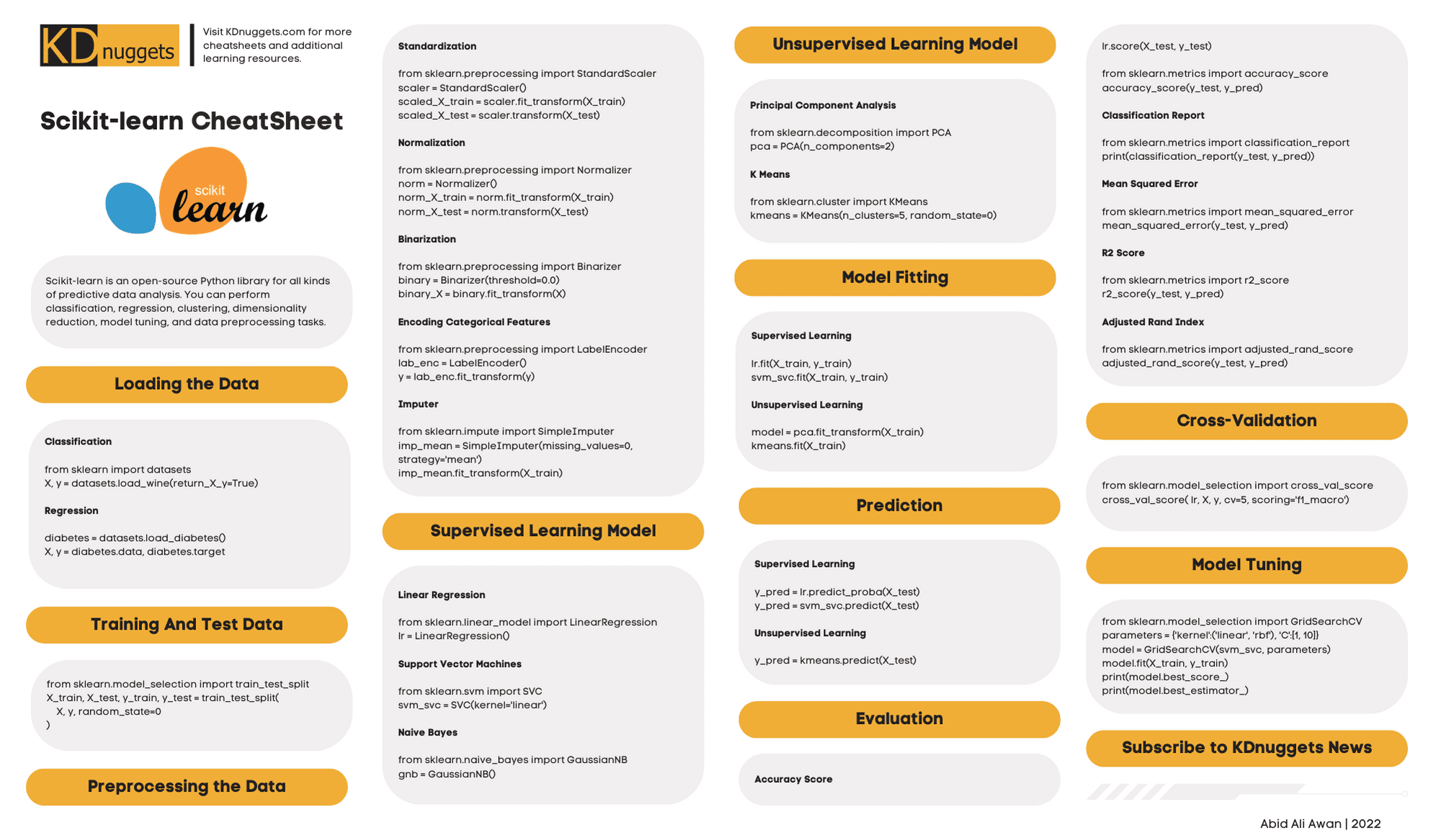You want to get started with machine learning. You have a foundational understanding of machine learning concepts. You know Python. What do you do?
The most obvious answer is to get up and running with Scikit-learn. Scikit-learn is an open-source Python library for all kinds of predictive data analysis. You can perform classification, regression, clustering, dimensionality reduction, model tuning, and data preprocessing tasks.
Scikit-learn’s unified API interface makes learning how to implement a variety of algorithms and tasks much easier than it would otherwise be. Once you learn the pattern of how to make Scikit-learn calls, you are off and running. The only thing you need after this, beyond your imagination and determination, is a handy reference.
KDnuggets has put together just the thing you need. This cheat sheet covers the basics of what is needed to learn how to use Scikit-learn for machine learning, and provides a reference for moving ahead with your machine learning projects. Much of the most common functionality that you will be using over and over again is covered. Have a look below for confirmation.
You can download the cheatsheet here.
In the cheat sheet you will find handy references for the following common Scikit-learn tasks:
- Loading data
- Splitting the dataset into train and test sets
- Preprocessing data
- Performing supervised machine learning tasks
- Performing unsupervised machine learning tasks
- Model fitting
- Prediction
- Evaluation
- Cross validation
- Model tuning
There’s no need to wait another minute to become proficient with one of the most-used tools in the machine learning practitioner’s toolkit. Once you have Scikit-learn installed, it’s simply a matter of following the relevant code snippets in the cheat sheet to be able to started. Just don’t forget to keep it handy while you progress.
Check it out now, and check back soon for more.


